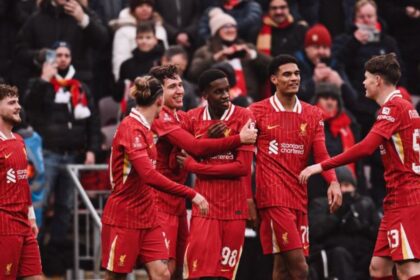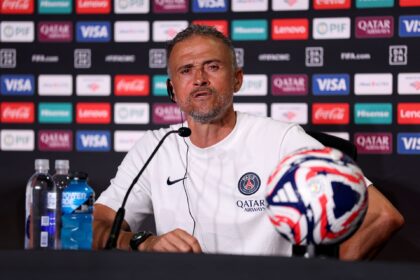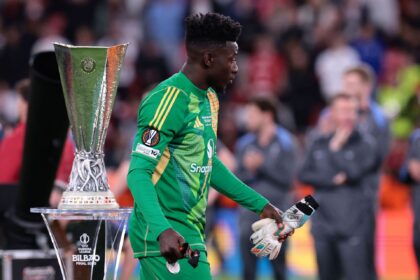An Argentine received the man of the match cheque in the opening game of the Club World Cup, between Inter Miami and Al-Ahly. But it was not the one that everyone wanted, prayed and hoped would put on a throwback show. Lionel Messi. The honour went to Oscar Ustari, the goalkeeper, who produced a clutch of acrobatic saves and staved off a penalty to keep the scoreline goalless and conceal the irreversible fading of their strike pair, Messi and Luis Suarez, two-third of the deadliest trident this century in Barcelona.
Sporadically, especially in the second half, Messi did Messi things. He strolled in the peripheral rings of the game before conceiving a piece of art inconceivable for most. Like the swerving cross that found teammate Fafa Picault in an unmissable position but for the outstretched claws of Mohamed El Shenawy, the Al-Ahly goalkeeper. Barely seconds remained when Shenawy tipped the ball from barrelling into the net from Messi. The concert was over. Messi alone salvaged the game from yawns and gasps, not because he had rolled the years back, but because he was simply Messi. Thirty years later, he would still draw the same awe and admiration, even if he were to play in clutches.
Therein lies the biggest flaw of the Club World Cup, hyped as football’s equivalent to the Big Bang according to Giovanni Infantino, the FIFA boss and the ideator of the tournament’s glamorous repackaging. That is, it’s over-reliant on stars to rev up the show, and not the quality of the game. That it is still a glorified post-season club friendly, without context, the only perceivable motivation and meaning being swelling the coffers. The tournament is a progeny of greed and one that only further nourishes it.
The game between Egyptian powerhouses and Inter Miami never roused the audience, not because Al-Ahly was slipshod but because Miami stuttered and stumbled, abysmally off the pace at times. It’s the failure of the qualification process. Miami are in the tournament because of the extra slot the host nation could avail. In the MLS standings, it’s slotted at sixth in a league that’s inferior to Egypt, which has been steadily supplying quality footballers to European clubs.
An impossible attempt. The finest of margins. 😮
— FIFA Club World Cup (@FIFACWC)
Mismatched contests could be a recurring theme of the tournament. Some of them are unavoidable. The qualification route makes it worse. The standard qualifying criteria is how the teams have performed in the continental tournaments in the last four years (2020-24). Logical enough on paper, but strewn with complications. For instance, Chelsea last won the Champions League in 2021, but since then they have finished third, twelfth, sixth, and fourth in the league. Nine of the 11 players in the starting line-up turn up for different clubs, managers have come and gone, and the owner is different too. Chiefly, they are not even the best in their own league, forget Europe.
Not that they are incapable of mounting a title challenge, but it would be farcical if they are the club world champions when they did not meet the eligibility yardstick of entering even the Europa League last season. The league champions Liverpool are not there, nor are Arsenal, the valiant semifinalists in the recent Champions League, besides finishing second thrice in the past three seasons of the league.
More bizarre is the presence of Juventus, who qualified by virtue of being the eighth-best eligible team in the UEFA rankings. The last Scudetto they won was in 2021, the last Champions League triumph arrived as far back as 1996, they have not advanced beyond the round of 16 in the last four years. So the best 12 clubs from Europe are not really the best 12 clubs in Europe. It’s true with every confederation. For instance, Japan’s Urawa Red Diamonds won the Asian Champions League in 2022, but either side of that, they haven’t won anything significant in the last decade. They last won the J-League title in 2006, finished just once in top four in the last eight years and in the latest season finished 13th.
Yet, they would return home richer even if they don’t win a single game; they would receive around $9.55 million, while every win in the group stage guarantees an extra $2 million, a draw could make them richer by $1 million. They could potentially earn for a month’s sojourn roughly as much as the league champions receive for a year-long grind (around $13 million). The club gets more spending power than, say, a third-ranked side or those beneath, creating a wider financial disparity. Financial windfalls could be converted to dominance in the future.
Forget economics, the current qualification path, derived from maths and complicated co-efficiency formulas, and not hinged on immediate form, holds the quality of the product as its biggest casualty. The sprinkling of teams from lower leagues is good for the game, but perhaps not for the tournament, especially for one trying to nudge the consciousness of the audience. If FIFA were more concerned about uplifting clubs from obscure leagues, the distribution of seats (12 for Europe and one for Oceania) and wealth (Manchester City pocket a participation fee of $38 million and Auckland City only $2.4 million) could have been more equitable.
The show really can’t go on without quality, even with the star dust of Messi, Neymar, Real Madrid or Manchester City. More than the calendar congestion or burnout fear, this would be the Club World Cup’s biggest challenge. It would work only if the 32 teams are indeed the best 32 in the world. It’s not even close this time in America.









